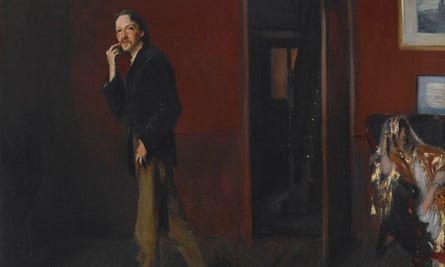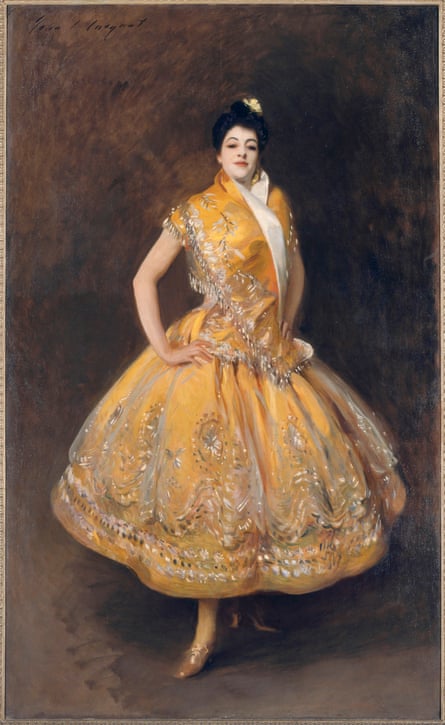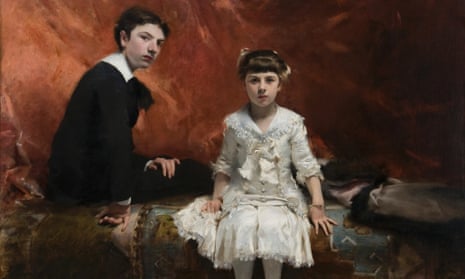In 1906 the celebrated society portraitist John Singer Sargent painted his own august image in starched white collar and silver tie for the venerable collection of self-portraits in the Uffizi Gallery in Florence. That same year in Montmartre, Pablo Picasso finished a portrait of Gertrude Stein by giving her a stone mask for a face. Picasso’s attack on the idea of the painted likeness soon led to faces becoming constellations of cubist shards or abstract ovals. The Mona Lisa got a moustache. In the lifetime of Sargent – who made it to 1925 – this avant garde assault left the traditional portrait, at which he so excelled, looking lost and archaic.
Little wonder, then, if Sargent has been widely misunderstood. This artist who painted glamorous high-society portraits in the manner of Van Dyck at the dawn of the modernist age is easily mistaken for a conservative throwback.
The National Portrait Gallery’s scintillating exhibition of this formidable genius makes nonsense of those superficial judgments. Criticising Sargent for not being a cubist is as naive as dismissing his friend Henry James for not writing Ulysses.
Sargent’s 1881 painting of two French children, Portraits de MEP … et de Mlle LP, is a tale of modern terror. Are these severe young people haunted by ghosts, or are they themselves ghosts? Marie-Louise Pailleron sits in a white dress looking straight ahead, her face as pale as death. Her older brother is more guarded and just as mirthless. They are intelligent and dangerous. The red silk hanging behind them and the rich carpet on which they sit add to the mystery and power of this anything but cosy portrayal of childhood.
Behind the times? No one else was picturing children in this disturbing way in 1881. Sargent, born in Europe to American parents in 1856, was au fait with impressionism – there are two portraits of his friend Claude Monet in this exhibition – but what makes him so original and haunting is the way he combines the tour de force brushwork he learned from the French with an acute interest in human psychology.

Portraiture at its most ambitious is the exploration of individuality, of the nature of the self. Sargent took on this great theme of the nature of selfhood at the exact moment when the stability of individual consciousness was being questioned by increasingly doubtful Victorians, disillusioned by Darwin, troubled by the cycles of the capitalist economy, who started to wonder whether we really are the sovereigns of either creation or ourselves.
No one gave late Victorian doubt a more fantastically beguiling literary form than the Scottish writer Robert Louis Stevenson. Two astonishing portraits of Stevenson hang side by side to create one of this show’s most dazzling moments. In the first, painted in 1885 when the success of Treasure Island had made Stevenson famous, his wife skulks in the corner of the painting hiding under a gold-threaded silk shawl while the writer strides across the middle of his living room, thin as a rake, thinking up some new story. Between the two people in this picture a door opens on to a sinister hallway. This gloomy space is the dark side of Stevenson’s imagination.

A year after this was painted, Stevenson published The Strange Case of Dr Jekyll and Mr Hyde, the shocking story of a man who exposes through science his own dual nature. Good and evil exist in the same self, which can be physically made into two men. In 1887 Sargent portrayed Stevenson again, and this time he revealed the Mr Hyde within the perky author. Stevenson the dandy rests back in his chair smoking, looking at us from jet black eyes, insouciant and demonic.
Sargent and his models enjoy playing games together: they pose theatrically and he gives them a stylish swagger. He loves the grandeur of the full-length portrait, especially when it lets him teasingly suggest the shape of a body under fashionable clothes. Women and men exert this skinny allure: La Carmencita the Spanish dancer and W Graham Robertson the aesthetic dandy are two monuments to gilded age desires.
Yet Sargent does not merely create flattering theatrical images of showoffs; there is a depth, a truthfulness even in his campest paintings. Robertson’s youth and vulnerability are painful. What will this painting make the sitter think when he is older, when wrinkles have eclipsed that silvery glamour? Once again it’s hard not to think of the fiction of Sargent’s contemporaries – this is The Portrait of Dorian Gray for real.
I have only one criticism of this addictive exhibition. It concentrates on portraits of artists, writers and bohemians, who mirror Sargent’s own artistry. He, like his writer friends, is a storyteller, a fabulist. The portraits here link together – all the people seem to be characters in a single great novel. Yet the focus on arty types might imply that his paintings of politicians and plutocrats are more staid. In reality he was just as daring when he portrayed prime ministers. They too are part of his grand novel.
The only person Sargent was scared of was Henry James. His portrait of the master of novelists is reserved, secretive, enigmatic. James looks at the world through eyes that reveal nothing of themselves. The true artist, suggests this portrait of one of the truest, is a perfect ironic observer of the human scene. That is what Sargent also aspired to be. This exhibition demonstrates his brilliant success.

Comments (…)
Sign in or create your Guardian account to join the discussion